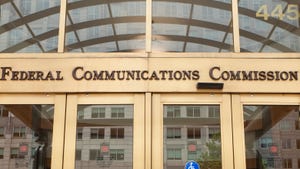The US is leading the WiFi 7 patent race
According to a new report, while Huawei is the firm that holds the most WiFi 7 patent families, the US is ahead overall with 1,300, compared to China’s 786.
January 6, 2025

The report by GreyB was based on data on WiFi 7 standard contributions spanning the period of January 2016 to December 2024, and it is intended to provide a “comprehensive and actionable view of the WiFi 7 patent landscape.”
Huawei, Qualcomm, LG, MediaTek, and Intel make up the top five companies and together they hold 50% of the total patent families in WiFi 7.

However despite Huawei being at the top of the pile, other Chinese companies ‘lag’, which GreyB says points to regional disparities compared to their position in 5G and 6G technologies. This disparity suggests a potential shift in innovation hubs, we’re told.
The US leads the pack overall with a ‘significantly higher’ number of patent families compared to the rest of the world.

Meanwhile OEMs like Xiaomi and Oppo have significantly increased their WiFi 7 patent portfolios compared to WiFi 6, while firms like Qualcomm, Ericsson, and ZTE have seen a decline, which the report says indicates reduced investment in WiFi-related technologies. The report adds:
“However, it is important to note that the Wi-Fi 7 IP landscape is still developing. Many patent applications filed in recent years have not yet been published, and as the standard matures, a clearer picture of IP ownership and trends will emerge. These insights are crucial for shaping licensing strategies and understanding the competitive landscape.”

All in all, 11,500 patents and 3,000 patent families are linked to WiFi 7, however the report claims that with no established patent pools, the likelihood of licensing disputes and litigation is high, stating:
“Many of these will be classified as Standard Essential Patents (SEPs), but limited transparency under IEEE policies makes it challenging to determine which are truly essential. This lack of clarity creates uncertainty around royalty obligations, licensing discussions, and ownership rights. The situation is further complicated by overlapping innovations from multiple contributors, often leading to disputes over patent ownership, questions about the validity of certain SEPs, and potential litigation.”
In terms of the future, the report concludes: “Initial activities have already begun in WiFi 7 and are expected to gain momentum in the coming years. It may follow a similar pattern to WiFi 6. For example, the WiFi 6 standard received approval in 2021, and IP transactions significantly increased. WiFi 7 work is nearly finalized, and IP transactions in WiFi 7 will likely see an uptrend in 2025 and 2026. This makes it the right time to identify potential sellers to strengthen WiFi 7 portfolios and protect product lines for OEMs.”
The Wi-Fi Alliance begun certifying WiFi 7 compatible devices around this time last year, which means devices can be badged as being interoperable with others using the wireless standard. The organisation says WiFi 7 will usher in new tech use cases and enhance existing activities such as such as multi-user AR/VR/XR, immersive 3D training, gaming, hybrid work, industrial IoT, and automotive applications.
About the Author
You May Also Like










.png?width=300&auto=webp&quality=80&disable=upscale)


_1.jpg?width=300&auto=webp&quality=80&disable=upscale)